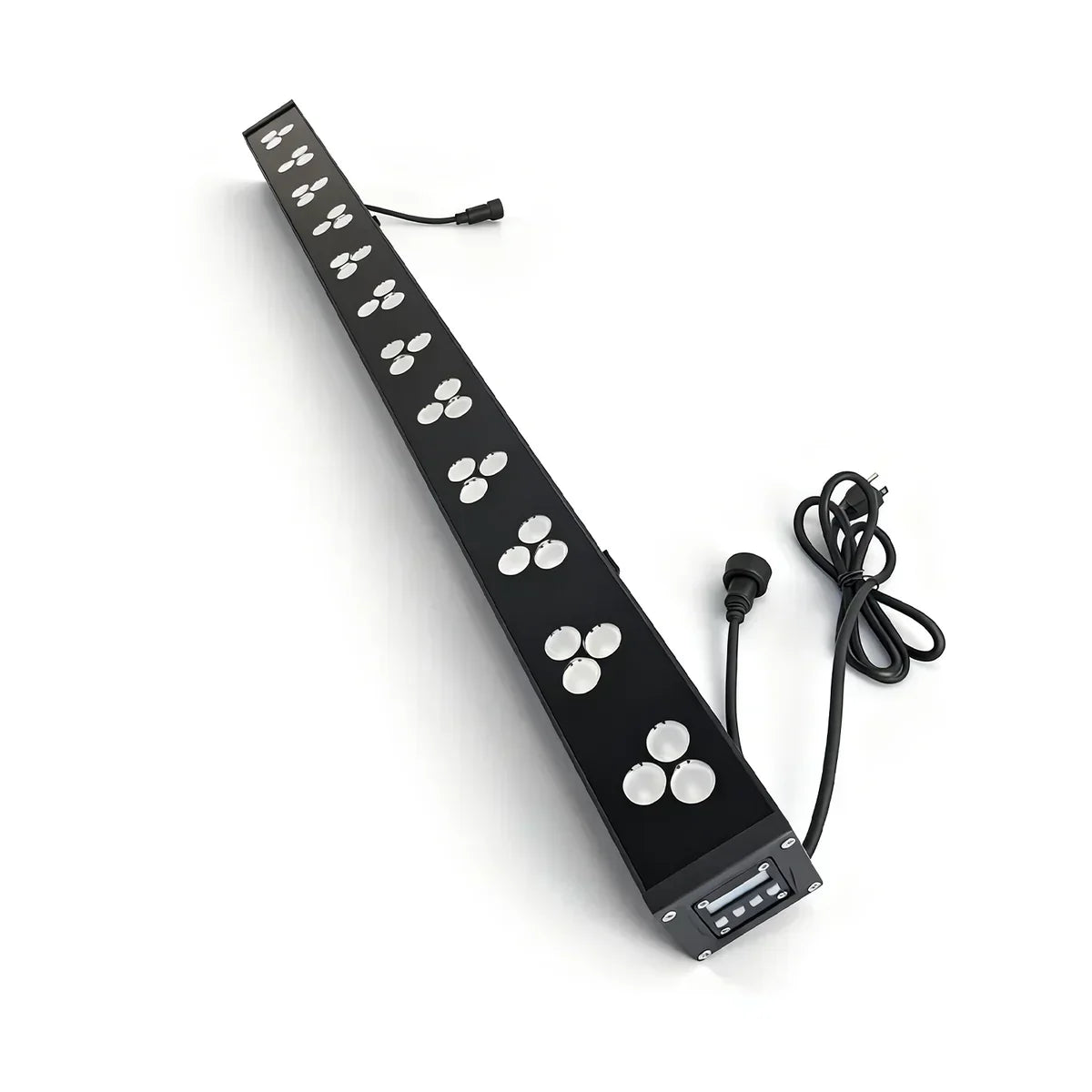In architectural and landscape lighting, LED wall washers are one of the most expressive types of linear luminaires. By “washing” walls with even light, they highlight the texture, structure, and rhythm of buildings, creating visually captivating environments. Whether used for hotel façades, commercial plazas, bridges, or interior galleries, the optical performance of wall washers directly determines the lighting quality. Among all technical parameters, projection distance and luminous uniformity are the two most critical metrics.
This article explores the key optical factors that define these characteristics, explaining how beam angle, luminous intensity, and lens design contribute to superior wall-washing performance.
1. Projection Distance: Determined by Beam Angle and Intensity
Projection distance refers to how far the light from a wall washer can effectively illuminate a surface. It depends primarily on two factors — beam angle and luminous intensity.
-
Beam Angle
-
Narrow beam (10°–20°): Produces a concentrated light beam with strong penetration, ideal for tall buildings or long-distance projections.
-
Medium beam (25°–45°): Balances projection range and coverage, suitable for standard architectural façades.
-
Wide beam (60°+): Provides broad coverage but with reduced reach, perfect for short walls or close-up accent lighting.
For instance, a 36W RGB wall washer with a 20° beam angle can project effectively up to 15–20 meters, while a 60° version may only reach around 10 meters.
-
-
Luminous Intensity & Efficiency
Light intensity is influenced by the LED brightness and the lens’s optical efficiency. High-performance wall washers often use SMD5050 or COB light sources combined with high-transmittance PC or tempered glass lenses, which maximize luminous output while maintaining beam focus.
Moreover, constant-current drivers and 24V DC power systems help maintain brightness stability and reduce lumen depreciation over time.
2. Light Uniformity: The Key to Visual Comfort
Luminous uniformity determines how evenly the light spreads across a wall. High uniformity eliminates hotspots and shadows, producing a smooth and professional lighting effect.
-
Optical Lens Design
Premium wall washers use secondary optical lenses to control light refraction and diffusion, ensuring seamless light transitions without bright lines or dark zones. -
LED Spacing and Layout
Inconsistent LED spacing can cause visible light spots. A high-density LED array—such as 60 or 72 LEDs per meter—improves uniformity and delivers smoother illumination across large surfaces. -
Installation Distance and Angle
Mounting position and angle also affect uniformity:-
If the fixture is installed too close to the wall (less than one-third of the projection distance), a bright band may appear.
-
A mounting tilt between 15° and 30° typically provides optimal wall coverage and smooth light blending.
-
3. Optical Materials and Protection: Ensuring Stable Performance
Beyond optical design, material quality and protection rating are crucial for long-term performance:
-
Tempered glass covers offer high transmittance and UV resistance, maintaining brightness and clarity over time.
-
Anodized aluminum housings provide excellent heat dissipation and protect optical components from environmental wear.
-
IP65–IP67 waterproof ratings guarantee stable operation even in harsh outdoor environments.
Proper heat management prevents color shift and brightness decay caused by overheating, ensuring consistent lighting results year-round.
4. RGB and RGBW Systems: Color Control and Consistency
As architectural lighting becomes more dynamic and artistic, RGB and RGBW wall washers have become increasingly popular:
-
RGB systems combine red, green, and blue channels to create a wide spectrum of colors for animated lighting scenes.
-
RGBW systems add a dedicated white channel, improving brightness and enabling pure, balanced tones.
Advanced PWM dimming and intelligent controllers support smooth color transitions, gradient effects, and music synchronization without flicker or uneven hues.
Recommended Products
Below are several high-quality LED wall washers suitable for outdoor architectural, bridge, and commercial lighting projects.
| Product Name | Key Features | Product Link |
|---|---|---|
| Linkable Linear RGB Wall Washer 36W | Linkable design, IP65 waterproof, multi-color control via remote | View Product |
| Linear RGB Wall Washer 36W | High brightness, waterproof, remote control included | View Product |
| 3-Pack RGB Wall Washer Set | Waterproof, multi-scene compatible, includes remote | View Product |
| RGBW Wall Washer 36W | SMD5050 LEDs, tempered glass cover, IP67 waterproof | View Product |
| RGBW Wall Washer 18W | Energy-efficient linear body, ideal for façade lighting | View Product |
| RGBW Wall Washer 72W | High-power output, perfect for large architectural projects | View Product |
Conclusion
The performance of an LED wall washer depends less on wattage and more on optical precision and design balance. By optimizing beam angles, light distribution, lens geometry, and installation setup, lighting designers can achieve both long projection distance and smooth uniformity, ensuring the architecture is illuminated with professional brilliance.
For projects that demand energy efficiency, stability, and aesthetic quality, a well-designed LED wall washer with advanced optics and durable waterproof construction remains the ideal choice for both functional and decorative lighting.

